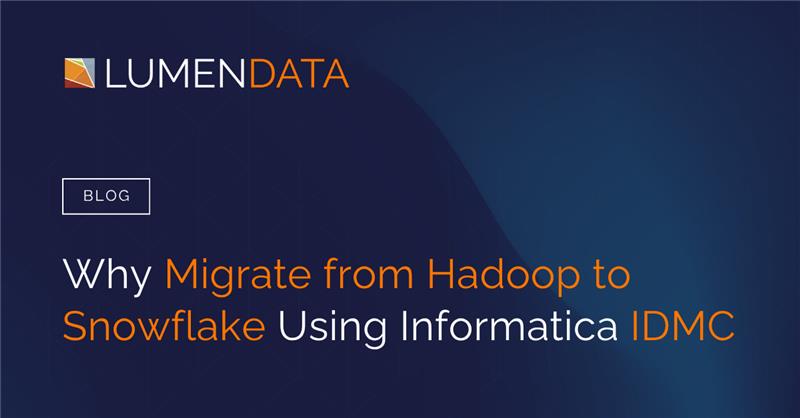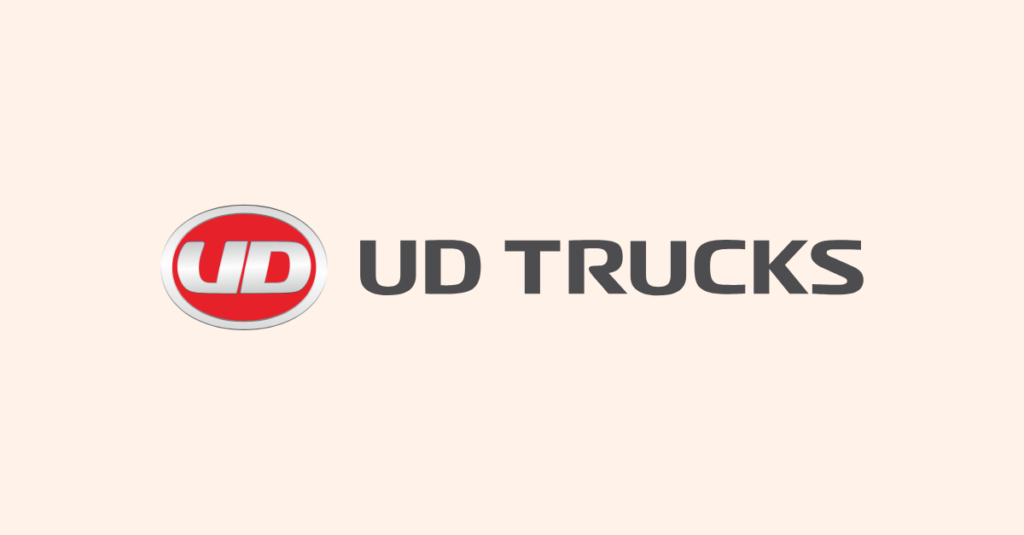Share this on:
What You'll Learn
For quite some time, the technology for big data management was based on Hadoop and its ecosystem. Organizations invested in Hadoop-based systems to manage the growth of unstructured and semi-structured data. Organizations created Hadoop-based solutions using enterprise companies like Cloudera and MapR that packaged their architecture into enterprise ready consumption. Today, Hadoop cannot support the needs of modern business. Costs for managing on-premises Hadoop clusters are rising and Hadoop architecture was never intended to democratize the management of real-time analytics, AI workloads, or cloud-native workloads. Now on the scene is Snowflake – the cloud-native data platform. What does Informatica Intelligent Data Management Cloud (IDMC) offer? Integration, governance, and automation you’ll need to migrate from Hadoop to Snowflake.
In the blog, we will discuss:
- Why is Hadoop going away?
- What is so future-ready about Snowflake
- How Informatica IDMC speeds up your migration
- A step-by-step migration framework
- Best practices and how LumenData helps enterprises successfully modernize
Limitations of Hadoop Ecosystems
Hadoop was introduced to solve a very big problem: collecting and processing large amounts of data. Now, in the cloud-native space, the benefits of Hadoop have become disadvantages. Here’s how:
- High Infrastructure Cost
Hadoop runs on physical clusters on premises that require endless hardware upgrades, scaling, and maintenance. Scaling involves provisioning more servers. It’s always an expensive and slow process to do. - Operational Complexity
Supporting HDFS, Hive, Spark, YARN, and other components of the ecosystem is resource intensive. Enterprises need entire teams of specialized people to just keep the ecosystem working. - Lack of Agility
Hadoop works well for batch processing data, but not real-time processing, interactive analytics and many AI/ML use cases. - Weak Governance
Lineage, metadata, and compliance involve multiple add-ons that mostly do not integrate well. - Innovation Lag
The market is now moving faster to cloud-native, elastic platforms and leaving the Hadoop roadmap and support behind.
Snowflake’s ability to handle structured, semi-structured and unstructured data could build a natural upgrade path for your existing workloads running Hadoop.
Also check out: Upgrade from Hadoop to Snowflake
Why Choose Snowflake
Snowflake has revolutionized the data platform industry with its Data Cloud, which is uniquely designed from the ground up for the cloud versus legacy systems like Hadoop.
- Cloud-Native Scalability – No on-premises hardware provisioning is needed. You can scale compute & storage independently, paying only for what you use.
- Separation of Compute & Storage – Run multiple workloads such as BI, AI, ELT, etc. on the same data without any contention for compute resources.
- Near-Zero Maintenance – No updates, no tuning of clusters, and no other infrastructure maintenance.
- Governance & Security – Role-based access control, data masking, and compliance certifications. You also get robust encryption such as HIPAA, GDPR, SOC 2.
- Performance – Automatic optimization, query acceleration, and package-based development features like Snowpark for advanced processing.
Snowflake’s ability to handle structured, semi-structured and unstructured data could build a natural upgrade path for your existing workloads running Hadoop.
Also check out: Upgrade from Hadoop to Snowflake
Role of Informatica IDMC in Hadoop to Snowflake Migration (H2)
Migration is not just about transferring your data; it’s also about modernizing your data pipelines, governance, and operations. And Informatica IDMC promises to help with that!
Automated Data Ingestion & Transformation
Connectors for Hadoop, Hive, and HDFS are ready out-of-the-box. IDMC can process high-volume workloads with parallel execution.
Data Quality & Governance
All data ingestion can be profiled, cleansed, and enriched with built-in capabilities to ensure high-quality data and traceable lineage via a metadata-driven approach
CLAIRE AI Engine
Harness AI-powered recommendations to assist with mapping, schema alignment, optimization, and more using Informatica CLAIRE!
Multi-Cloud Flexibility
Whether your Snowflake runs on AWS, Azure, or GCP, Informatica makes your migration portable!
End-to-End Orchestration
Automates your migration and also continues to automate the ongoing integration, monitoring, and governing after your migration is complete.
Migration Framework: Hadoop to Snowflake with IDMC
For a successful migration, you must take a systematic, phased approach:
Step 1: Take account of the datasets, workloads, and interdependencies in Hadoop. Identify the business priority data pipelines and the data sets that have compliance dependencies.
Step 2: Use IDMC connectors. They will help extract data from HDFS, Hive and/or other components in Hadoop. Now you need to write those records to your object storage such as S3, ADLS or GCP Storage.
Step 3: Map your Hive tables and schemas to the Snowflake equivalent. Please note that you need to implement transformation logic according to seats in Informatica. Include data quality checks to validate that you are moving ‘clean’ data.
Step 4: Load to Snowflake. Here you use IDMC’s ELT pushdown optimization for large amounts of data to provide efficient reads. Optionally, you can utilize Snowpipe for real-time ingestion, if required.
Step 5: Run validation scripts. This enables you to check row counts, schema mapping and data quality. Take advantage of clustering strategies and/or partitioning to optimize queries in the Snowflake environment.
Challenges and Solutions
Even with the right tools, you may face migration blockers. Here’s how you solve them:
| Challenge | Solution |
|---|---|
| Large Volume of Data | Moving petabytes of data from Hadoop to Snowflake Data Cloud. Incremental migration of data and Informatica’s ability to process data in parallel. |
| Schema Mismatches | Hive schemas do not match Snowflake's schema exactly. Use IDMC and AI to automatically map schemas. |
| Governance Gaps | Governance issues related to compliance when transitioning to Snowflake. Utilize Informatica’s metadata management capabilities and Snowflake’s governance capabilities. |
| Downtime | In some instances, business-critical pipelines will not stop running. Run Hadoop and Snowflake in parallel until cutover. |
Best Practices for Hadoop to Snowflake Migration
- Begin small, scale quickly. Start small with the "non-mission-critical" workloads, then grow.
- Apply Automation. Use Informatica's prebuilt templates and AI suggestions.
- Prioritize governance first. Establish quality, lineage, and security checks on Day 1.
- Collaborate across teams. Get business users involved early to validate data when subsequently migrated to Snowflake.
Why Snowflake & Informatica
Utilizing Snowflake and Informatica brings to the table:
- Real-time analytics with continuous ingestion via Snowpipe.
- AI/ML readiness with Snowpark & Informatica for AI/ML workloads.
- No lock-in with portability across AWS, Azure and GCP.
- Data democratization by giving analysts, analysts and business teams both governed and self-service access to data.
The LumenData Advantage
At LumenData, we help enterprises move beyond Hadoop into the modern Snowflake Data Cloud with precision and speed.
- A verified quickstart approach for Hadoop to Snowflake that takes 6-12 weeks and allows migration complexity to be reduced.
- Deep experience with Informatica IDMC including Data Quality and Governance, Orchestration, and so on.
- Support in assessing migration, optimizing migration, and enabling AI.
- Experience across platforms including Snowflake, Informatica, dbt, Fivetran, Databricks.
We take a governance first, AI ready approach that allows our customers to have successful and transformative migrations.
Wrapping Up
Hadoop has run its course. Organizations can no longer afford to be burdened by costly, rigid systems that are expensive to run and stifle innovation. Snowflake and Informatica IDMC provide the path forward: scalable, governed, cloud-native, and ready for AI. If your organization is still on Hadoop, it’s time to migrate to cloud. Choose LumenData as your partner to move to Snowflake using Informatica IDMC. Reach out today.
About LumenData
LumenData is a leading provider of Enterprise Data Management, Cloud and Analytics solutions and helps businesses handle data silos, discover their potential, and prepare for end-to-end digital transformation. Founded in 2008, the company is headquartered in Santa Clara, California, with locations in India.
With 150+ Technical and Functional Consultants, LumenData forms strong client partnerships to drive high-quality outcomes. Their work across multiple industries and with prestigious clients like Versant Health, Boston Consulting Group, FDA, Department of Labor, Kroger, Nissan, Autodesk, Bayer, Bausch & Lomb, Citibank, Credit Suisse, Cummins, Gilead, HP, Nintendo, PC Connection, Starbucks, University of Colorado, Weight Watchers, KAO, HealthEdge, Amylyx, Brinks, Clara Analytics, and Royal Caribbean Group, speaks to their capabilities.
For media inquiries, please contact: marketing@lumendata.com.
Authors

Content Writer

Senior Consultant



